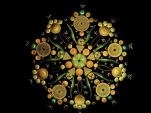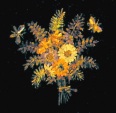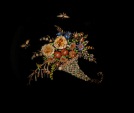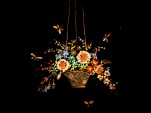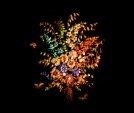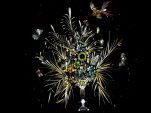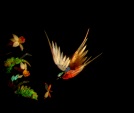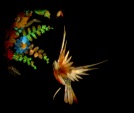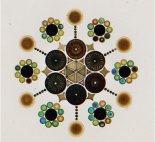 |
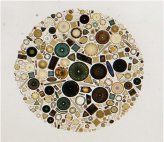 |
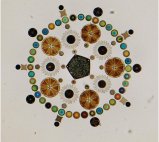 |
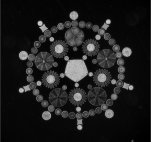 |
In 1864, JOHN DIEDRICH
MÖLLER (1844 - 1907) founded the J.D.MÖLLER company in Wedel near
Hamburg. This company sold among other things microscopic slides. J.D.MÖLLER
had specialized on arranging diatoms on coverslips. Even today such slides
are produced by some amateurs, but MÖLLER was able to arrange thousands
of frustules with an accuracy never reached again. Depending on the purpose
he produced prepared slides showing linear arrangements, circular arrangements
and even show preparations with diatoms arranged in regular geometric patterns.
So J.D.MÖLLER became a legend among professionals: Never again slides
with so many diatoms have been made (some with more than 4000 different diatoms!),
never again such a precision combined with such an aesthetic has been attained.
J.D.MÖLLER described
and photographically documented many of his prepared slides in a catalogue
published in 1890, but all these magnificently prepared slides were lost,
and as MÖLLER never published his method in detail he took his secrets
to his grave. Usually a coverslip is coated with a very thin layer of special
adhesive, then the frustules are positioned with the help of a very fine bristle,
but this technique does not allow any readjustment and cannot explain the
accuracy of positioning attained by MÖLLER.
In 2002 Mr.M.BURBA, a member of the MIKROBIOLOGISCHE VEREINGUNG, started investigations concerning the fate of these preparations. Time consuming researches in various archives and museums led to the rediscovery of a variety of MÖLLER´S preparations and even of the positioning device MÖLLER used, along with MÖLLER´S laboratory diaries. Based on this evidence the technique used could be largely reconstructed. And even the whereabouts of the largest ever produced slide with more than 4000 species laid on an area of 5x7mm could be determined.
SHOW PREPARATIONS
